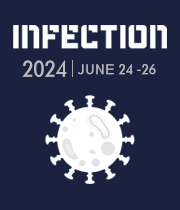Title : Application of Mmetagenomic next-generation sequencing (mNGS) in diagnosing pneumonia of adults
Abstract:
Objectives: Accurate identification of pathogens that cause pulmonary infections is essential for treating and accelerating recovery of pneumonia in adults. At present, despite metagenomic next-generation sequencing (mNGS) technology has been widely used in clinical practice to identify pathogens, the clinical significance and necessity of pathogen detection in bronchoalveolar lavage fluid (BALF) of adults with pneumonia remain unclear. This study aimed to explore the diagnostic performances of mNGS and CM, and the pathogen distribution of pulmonary infection, and to investigate the clinical application value of mNGS in pulmonary infection.
Methods: In this study, 80 patients with pulmonary infection were enrolled from the Affiliated Changzhou Second People’s Hospital of Nanjing Medical University between January 2020 and September 2022. The diagnostic performances of mNGS and conventional methods (CM) were systematically analyzed based on BALF samples, and we explored the impacts of mNGS and CM in diagnosis modification and treatment.
Results: We found that the positive rate of the mNGS method was significantly higher than that of CM. Bacteria were the most common pathogens, and Streptococcus pneumoniae was the most commonly identified pathogen. Candida albicans and Epstein-Barr virus were the most frequently identified fungus and virus. Atypical pathogens such as Mycobacterium tuberculosis, virusNontuberculous mycobacteria and Chlamydia psittaci were also identified. A total of 77 patients were identified with mixed infections by mNGS. With disease progression, and after recurrent antibiotic treatment, significant dynamic changes in the clinical manifestation from the BALF samples could be found by mNGS.
Conclusions: This study highlights the value of mNGS in detecting pathogens in BALF samples from patients with pulmonary infection. Compared with the CM, mNGS improved the positive diagnosis rate, especially for diagnosising of Mycobacterium tuberculosis, atypical pathogens, and viral and fungal infections.



